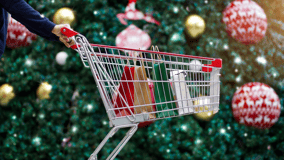Excellent beer doesn’t sell itself. So, what can you do to come out on top at the bar?
Excellent beer doesn’t sell itself. Your customers and their punters need to choose your pint from the vast array of other craft beers available before they can fall in love with it. So, what can you do to come out on top at the bar? Enter our Sell More Beer 101.
What you know – Why you need to know what you are selling before doing anything else.
Here's how to make your tipple top of the pile:
1. Excellent beer
Yes, this is the basis of a successful brewery, but you know that already. You can work as hard as you like on everything else but without a quality beer you will soon be found out.
2. Know your stuff
You need to know your beer inside and out.
- What is in it?
- What flavours does it evoke on the palette?
- What does it pair with best when eating or snacking?
The more you can tell your buyers and end users about your beer the better.
For your buyers, this will inform sales advice to customers at the bar, food and drinks offers that may work for their venue and marketing assets that will help promote your product at point-of-sale.
Don’t forget that the same information repackaged is quality content for direct communications with your end users through social media and advertising.
The more you can support your customers with knowledge about the product and ways they can promote the product will make buying from you more attractive than your less helpful competition.
3. Create a brand
Ok, this seems obvious, but it is easy to skip past the basics of knowing who your brand is targeting. “Surely, it’s for everyone because it is delicious?!” Well, yes and no. Or maybe you are thinking that it’s up to your customers to figure it out as they are the ones that have to sell it? Come on, this is your product and only you should be in charge of how the world views it.
You need to own and steer your brand to success. Don’t rely on any one element of your brand to carry you to profit. Thinking beyond the brewing process may not be your area of expertise but there are a few simple questions to help you find out where you fit in:
ASK YOURSELF:
- What could your product be compared to?
- Where are you going to be selling your beer?
- Who are your customers for this product or each beer?
- Do you think you need a range of messaging to suit each different type of customer at different venues?
- How does the above influence what your product looks like? (its packaging, logo etc.)
Don’t copy or mimic another brand. You may be influenced by styles or know who you are positioning your product against but be careful about trying to be a new version of something that is already successful.
HOW TO STAND OUT:
- Be unique with your visual identity. It may not always be easy to be unique, but you should aspire to be.
- Create a list or scrapbook of things that relate to your beer. This could be flavors, places, images etc. These will help you shape your image for each beer or your whole brand.
- Test your ideas out on your co-workers and do some research online to make sure nothing too similar already exists. Your assumptions about who your target market is should be tested before you invest a lot of your time and money in a full campaign.
The key is not to have a branding idea and try to force your product to fit in with it. ALWAYS start from your product. Your beer is the star of the show and everything else should support and reiterate what makes your product special.
What to tell your audience - You know your product is great, how can you convince your audience?
4. Be Social
Don’t rely on the bars and restaurants to be singing your praises on all of the various social media streams available just because you sell to them. They will be busy enough with special events, promotions and fighting for business with their competitors. But shouting into the void of the internet about how awesome your beer is won’t do that much either… so what should you do?
Just be, well, social. You can do this by:
- Connecting with your customers on various platforms
- Engage with end users (your drinkers), run competitions, offer food pairing advice and chat about your shared love of all things beer
- Supporting their promotions that relate to your products
- Supporting their events and venue specific celebrations/promotions to show that you care about their success (whilst keeping your product at the front of their mind).
- Mention customers in your posts when they take on a new product, hit a milestone as customer or when you meet with them. Everyone likes a pat on the back.
- Go live online and share behind the scenes moments at the brewery such as taste tests, information about the people that make your beer and special moments that make your brand resonate with your audience rather than just a faceless product.
- Focus on being loyal and local.
- Associate yourself with popular trends at the time.
It has never been easier to get your beer in front of millions of people, but this comes with the added complications that a lot of other beers are already working the system. To be heard in the noise you need to have something special that will catch the attention of your target audience.
For many independent businesses, this can be their connection to their local community. Testing your messaging out on a focused target audience is essential. This is something you should have an idea of from when you created your brand and who you are selling your beer to currently.
You can do this in various ways through each social channel. Here are a couple of examples to get you started:
TWITTER HASHTAGS
Find the hashtags that your audiences are using and following. At a basic level, you should add your local area, product name and slogans.
You can see this in action with sales-i customer Beavertown Brewery’s Twitter account. They make sure to #Beavertown posts and separate out their unique antics with #TeamBeaver
As a more relaxed platform with unlimited characters you can extend your posts to include links to partners and promote your products.
With a focus on local, Facebook is great for hitching your wagon to local events. sales-i user, Purity Brewing are great at this – See image to right.
5. Lead the charge
Who are your top advocates? If it isn’t you and your employees, why not? You have missed an essential step in developing your brand as good PR begins at home.
- Key to getting all your staff on-board is education. Make sure all your staff know what you do, why you do it and what your brand is all about.
- Use this valuable resource to spread word about your products and your brand across social networks and word of mouth.
- How people interact with your social posts accounts for a significant proportion of your Google Adwords relevancy score. So, encouraging your staff to interact with your posts is a great boost to your marketing campaign.
- Be willing to help your buyers to correctly position your products to increase sales.
- Have competitions relating to your product for end users. Make sure to mention where people can sup on your tasty beer local to them.
- Keep up-to-date with industry news, participate in events and join the conversation online with fellow breweries to increase your social influence and industry standing.
Each of these will ensure that you spread your social influence through each of your customers and competitors’ audiences as well as your own.
Be different – Time to make your product stand out from the crowd.
We now turn our attention to the value of you. This starts with how you create your beer, your work ethos and atmosphere. We then turn our attention to how you sell your products, build and maintain constructive relationships with customers.
6. Show your face
Never underestimate the power of meeting up with customers. Also make sure you show the people involved in creating your beer in all your communications. This applies to both your B2B customers and end users.
Want to know if you are on the right track with your product and how your brand is perceived? Don’t waste your customer’s valuable time asking for anecdotal evidence – go straight to the source and ask your regular drinkers. Use that social media following you have grown or go to the pubs. It’s a hard job but someone has to do it!
7. Break the sales mould
Maintaining strong relationships with your B2B customers is essential to up-selling and cross-selling. What can be easily forgotten is the opportunity to listen to your customers’ requirements and challenges that every sales call and face-to-face visit provides. Nothing is more valuable than being able to know how to make your customers happy and therefore more likely to continue to buy from you. Showing that you listen and respond to their challenges will add value when sales and profits margins are stretched.
You don’t need to wait to hear from your customers that their spending habits have changed with sales-i. With our business intelligence you can create alerts that run daily to alert you to drops in financial spend and/ or specific products.
The Spend Mix Analysis feature allows you to benchmark one customer’s spend against that of all of your customers. The average line shows the combined average of sales across all of your customers for each product or product group over a year period. This highlights areas of potential for up-selling and cross-selling which will inform your next sales conversation.
As shown on the left, you can see products where they are purchasing more or less than your average your customer.
Finding out that your customer isn’t buying a product from you are they buying from a competitor? Being proactive about how to win back this business will contribute to increasing your sales to existing customers.
The Spend Mix Analysis is also a fantastic tool for seeing where your customers excel. If one customer is selling more of one beer than anyone else, you should ask how they are doing it. If you could advise others on how to boost their sales not only will you be selling more beer, but they will be making more money thanks to your help. Who wouldn’t love their supplier for that?!



